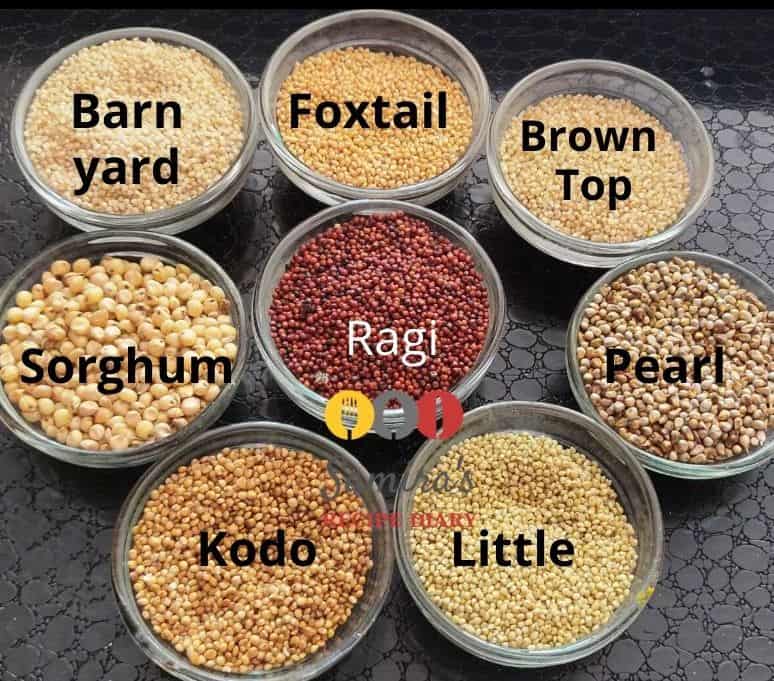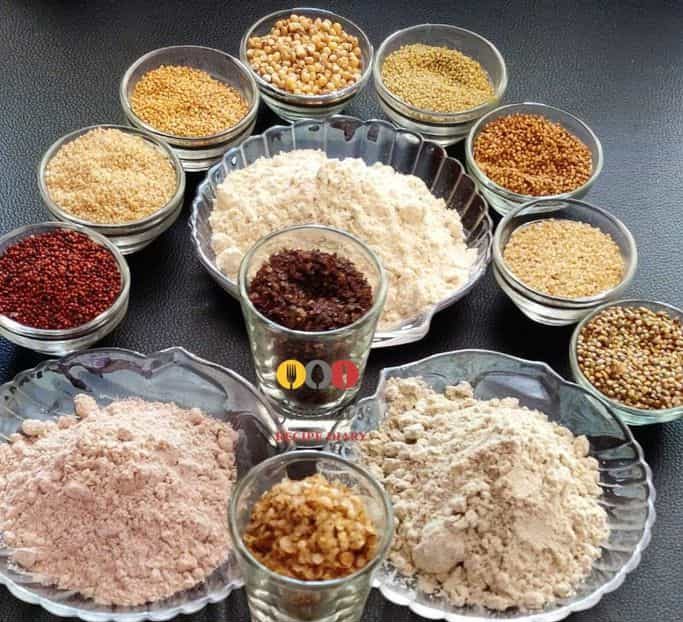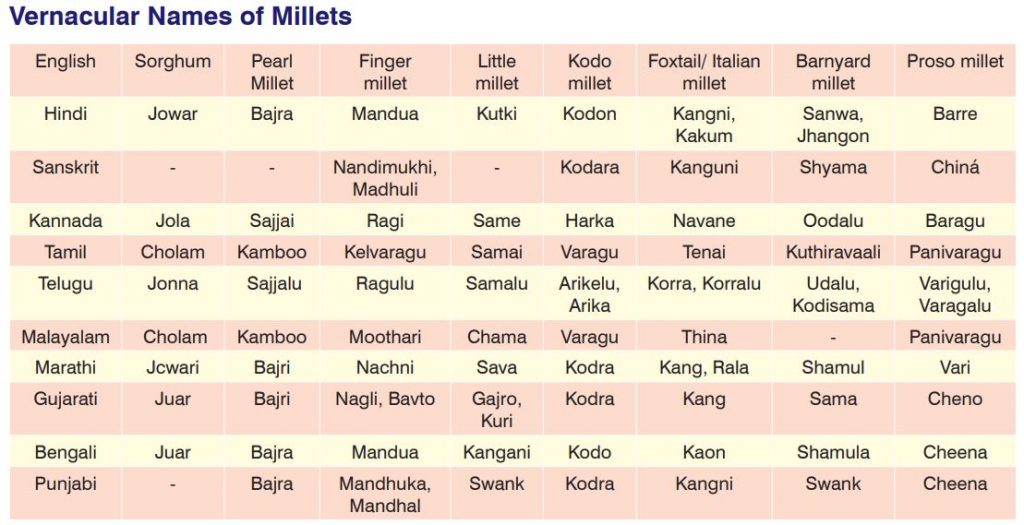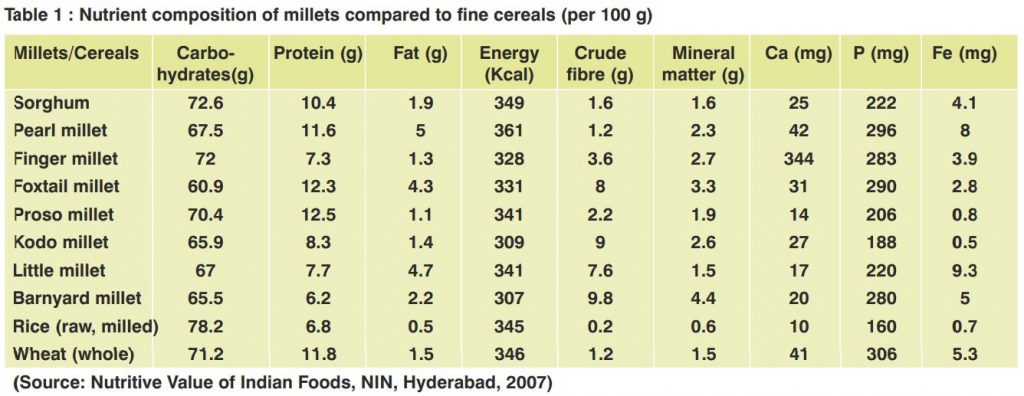Should Anyone Avoid Millets?
Millets are good for everyone but as exceptions are always there to prove the rule, similarly, here too is an exception. People who are suffering from hypothyroidism should not consume millets as they contain goitrogen, a substance that interferes with the production of thyroid hormones. Source
How To Cook Millets?
Gone are the days when millets were used only to make chapati or khichdi or porridge only. Today, millets are used for cooking a variety of recipes ranging from simple chapati, Idli/Dosa, to most exotic ones like cakes, cookies, salads, burgers, soups, and whatnot.
- When using in flour form then it can be used as it is after kneading or mixing up a batter.
- But when cooking with grits or whole millets then it is slightly different. There are two methods to do this. One is to boil in plenty of water just like pasta and then put it in the colander. This way, all the starch is drained out. And then the boiled millet can be used for various recipes.
- In the other method, one needs to have an idea as to the quantity of water added to cook it. The quantity of water to be added to millets depend upon the type of consistency we are aiming at. It can be equal or double or even three times the quantity of millet. For example, when I make Sama pulao (Barnyard millet Pulao), I take double the quantity of water as I like each grain to remain separated after cooking. Some people who prefer mushy consistency, add three times water. But ideally, 2 parts of water is added to have perfect separated grains of it.
Why is it Necessary to Soak Millets?
Just like beans, it is mandatory to soak millets, whenever they are whole or in rice form.
And these must be soaked at least for 6 to 8 hours or if possible overnight.
Some millets like Pearl Millet (Bajra) need soaking for 12 hours too. Recently, I soaked barnyard millet and got busy with other things forgetting completely about it. When checked it after a day, it still was fine without any foul smell or foam setting on it. Thus these are very forgiving too.
It is necessary to soak millets overnight or for at least 6 hours :
- to get rid of the phytic acid which inhibits the absorption of good nutrients.
- to speed up the cooking process.
- to make them easily digestible.
All Millets Are Gluten-free But All Gluten-free Foods Are Not Millets.
Conclusion
This info was just a glimpse into millets without any recipe. Each millet has its own positives and is rich in some or the other nutrient and thus we should use all the millets. I will be sharing details of each millet in the recipe corresponding to it.
So, in simple words, we should eat millets to have a healthy life, to avoid lifestyle diseases like cancer, diabetes, gastric problems, cholesterol problems by availing all the goodness of these tiny seeds.
They have unique nutrients that are good not only for our physical health but also for mental health. Being fiber-rich if these are consumed daily then they promote bowel-movement, detoxify our system and helps in lowering blood sugar and cholesterol levels.
I hope you have liked this brief info about millets. I would love to have your views regarding this.
Thank you for reading this post. If you have liked this recipe then do let me know by leaving a comment below. Your feedback fuels my enthusiasm. You may share this post with your dear ones by clicking on the little buttons below. You may follow me on Facebook Pinterest Instagram(#samirasrecipediary) too. for latest recipe updates. Thank you!






Interesting and detailed post about millets. Like most people these days, I took to millets quite late. But now I’m aware of the historical and nutritional value they have for us. I still think we aren’t promoting them as much as needed. Hopefully your series will do its bit in this direction.
Thank you so much for liking the post. You are right that it’s not getting it’s due because of a lack of promotion. The world of advertisements affect everything we do or use. But as now you have started using millets I hope that you will stick to it. Do share your feedback if you try out any of the millet recipes.
Wow! Simply amazing post! Personally I learned a lot about millets. In my home, Jowar, Bajra and Ragi are cooked regularly. But the others you mentioned are new to me. I am looking forward to reading your recipes and trying them out. Thank you for coming up with such an amazing topic!
P.S: Please embed your twitter handle in the twitter sharing button.
Thank you so much, Mayura! It’s nice to know that you are already using millets. Do share your feedback if you try out any of these.
Samira Ji rocks with a long and detailed post on millets. Looking forward for more .
A very informative post. Thank you for sharing about the super food.
My pleasure dear! Glad that you liked it.
Wow! You covered every tiny detail about millet! Loved it. It’s related to health. I will refer this article in my future blog posts:)
Thank you so much dear for liking it and your encouraging words.
This is a very extensive and helpful post on millets. Millets are very good for health. My son loves ragi pancakes
Thank you so much! As your son loves Ragi, I am sure he will love other millets too.
A very informative post. Thanks for sharing. I have been eating millets but didn’t know the importance of it in such details.
Thank you so much Jyoti. Good to now that millets are already in your kitchen. Do try out these recipes, you will love them.
Wow! What detailed information about nutrients, benefits and recipes of various millets. You killed it, Samira Ji. I never ever thought about it. Thanks for sharing this.
Thanks a bunch dear! Now that you know, then give it a try for sure. Your family will love these.
What a comprehensive detailed study of Millets Samira….One of my friends who lives on a farmhouse invited few friends to lunch and treated us to a sumptuous lunch made with only millets..from starters to desserts.
Wow! What a wonderful lunch it must have been. Everything from starters to desserts means a lot. Hope you will try out too. Thank you so much for liking the post.
Millets have gained popularity and many recipes are formed around it. No wonders our elders have been consuming it on regular basis for a very long time.
True! Slowly but gradually we all are following our ancestors only.
Such an informative post and I agree millets are great source of nutrition and we used it less often in our day to day meal. will check other recipes too. thanks for sharing.
here is my first post of the series
https://surbhiprapanna.com/2020/03/31/blogchattera2z-a-amaranth-paratha-an-ancient-grain-healthy-and-tasty-recipe/
Thank you so much Surbhi for liking it.